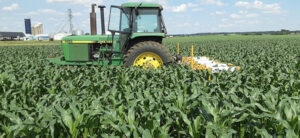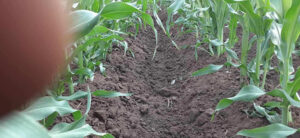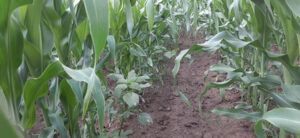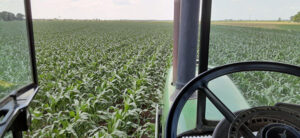Archives: testimonials
Post Type Description
The Crop Critic Eric Reed
Eric Reed, aka TheCropCritic on YouTube, holds records with the National Corn Growers Association in Alabama and Tennessee. We spoke with him at the 2024 National Farm Machinery Show in Louisville, Kentucky. His testimony on the all-cast Zipper Closing Wheels is below.
You can find Eric on YouTube here: @TheCropCritic
Cast Zippers -B.L.
We ran a row of the cast Zipper wheels next to spiked, smooth cast, Furrow Cruisers, and Yetter cast spike. The Zippers did the best job across dry, wet, and almost sod conditions. Will be ordering them for the entire planter this year.
B.L.
Tim R., North Dakota
I have tried all sorts of systems on my CIH 950 planter for fertilizer and the Schaffert 2 x 2 tubes are the only ones that work in all conditions. I can put down a heavy rate and still be close to the seed, and I’m not interfering with the seed trench. Plus, with running Chicken Trackers instead of the packer wheel I get good closure and no gumming up the wheel. Win/Win all the way around.
Mike Ellis, Mt. Hope Seed Co.
Schaffert Seed Rebounder Review:
Context:
I’m part of a small family farm located in the Willamette Valley of Oregon. We primarily grow seed crops (Annual and Perennial Ryegrass, Tall Fescue, Red Clover, Crimson Clover, and Radish). All of these crops have a relatively shallow planting depth, typically around ½”. Some of our production is grown under contract and these contracts often stipulate that the crop must be certified. This certification typically requires several crop inspections and there are rigorous standards for how much crop can be outside of the drill row (often times no more than 1%). The reason for this is it’ s impossible to tell if crop outside of the drill row is from seed bounce or volunteer from a previous year potentially from a different variety. If you fail certification in the best case, you will have your sale price docked and in the worst case it may void the contract and leave you without a home for your crop (in a poor market this will mean a significant price reduction and possibly not being able to find a sale for that crop for several years). Needless to say, seed bounce is not acceptable for us. Which leads me to the intended benefit and why we installed our first set of Seed Rebounders.
Intended Benefit:
The first time I took apart one of our openers on our drill I was appalled. The seed tube ended at the hub where the double discs bolt on. From there we had been relying on gravity to guide seed to the bottom of the furrow, which is not ideal for the small seeded crops that we grow. There was absolutely nothing behind the seed tube to keep the seed in or direct it down. As I installed the Seed Rebounders, I immediately saw that wide-open gap to the back of the double discs get filled. Between the bracket and the Rebounder, the only place left for the seed to go was to the bottom of the furrow. After using them in field we saw a significant reduction in seed bounce, if not an elimination of it.
Unintended Benefits:
With our shallow planting depth (typically ½”) we tend not to use much to close our furrows because of the risk of moving seed out of them. These Seed Rebounders have acted as a closing system for us. They gently pull loose soil around the furrow back in over the seed without moving the seed out of the furrow. This becomes all the more important because of one of our biggest pests in our region, slugs. Slugs cause nearly $100 million worth of damage to the $500 million Oregon Seed Industry annually (Capital Press & Oregon State University). As my dad has said, “Every time we leave a furrow open, we’ve built a home for slugs and when we drop seed into it, we’ve set the table for them.” These Seed Rebounders don’t decrease the slug population, but they do help us manage the risk for early season damage (which can be the costliest). By closing the furrow, we have managed our fields to not create a slug home where our crop is sprouting. This by no means solves all of our slug problems but it is an indispensable tool in our management of this pest.
Straight Shot:
Over the years we have been using more biological products in our fertility program. These include microbial inoculants as well as plant and microbe stimulants. Many of these products can be damaged and even killed with UV exposure, AKA direct sunlight. The Straight Shot has allowed us to shift our starter fertilizer from being banded over the row to being applied in furrow with the seed and covered with soil. This allows the more sensitive products in our starter mix to have a better chance to be fully effective. There are still many variables that are outside of our control that can affect how well our biological products work but this tool has taken one major variable (sunlight exposure) out of the equation.
Dale C.
I have used your Chicken Trackers for 2 years now on my CIH 1255 planter. They have greatly improved the closing of the seed trench over the OEM press wheels. They will bother a little in sticky conditions but not any worse than the mud buildup on the original press wheels. In good to dry conditions they do a great job.
I would also like to comment on your employees. You have a top notch group. They’re all so friendly and helpful and willing to take time to treat me like I’m the most important person there. From the girls up front to everyone in assembly and particularly to Gage and Anthony upstairs for directing me and giving advice I needed on my Dosatron injection system. I sure appreciated doing business with your group.
Darin H., Minnesota
I’ve run 13 rows of Mohawk spiked closing wheels on my 16 row John Deere 1770 NT planter for the past two years, alongside three rows of competing brands. This year, I switched the final three rows to Mohawks after seeing their performance side by side. The adaptability of the Mohawks to fit onto an OEM will is a huge plus. Also, their light weight allows for flexibility in varying field conditions if you have adjustable pressure on your closing wheels.
Neil G.
We have ground that is both rocky and has draws and hills. We tried the 4 Link Closer on one row last year and found that it prevented some of the issues we were dealing with.
The main improvements were better row unit performance around the draws and hills due to increased tail section travel. The increased travel also allowed smaller stones to pass under the row unit and not get caught in the closing wheels, as sometimes happens with spiked closing wheels in our situation.
We decided it was good enough of an improvement to use them on the whole planter this year.
The Snodgrass’s, Kansas
“Ripping with our New York Ripper. We love it!!! -Thank you Paul Schaffert!”
Lowell Volkert, Wisconsin
Lowell Volkert is a dairy producer and farmer from New Richman, WI. He has been farming organically for over 30 years. In previous years, he has used Danish tine cultivators and the Einbock tine weeder system. In 2021, Lowell purchased a Buffalo 6600 cultivator from Schaffert Mfg. Co. After running the Buffalo cultivator with the disc hillers set to throw soil into the row along with Ridging Wings on the back, he was able to cover up large weeds that still remained after he had run his Einbock tine weeder and Danish tine cultivators earlier. He called us and made this comment: “BUFFALO IS THE ONLY WAY TO GO!”




